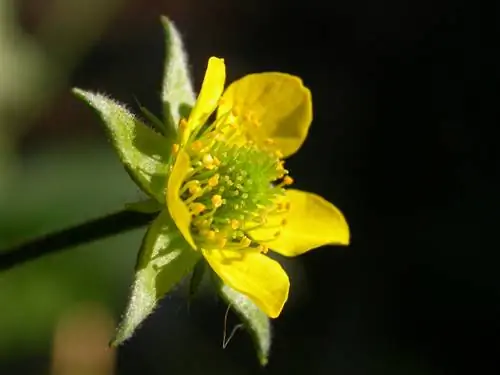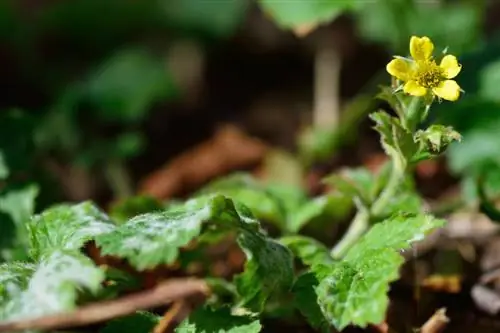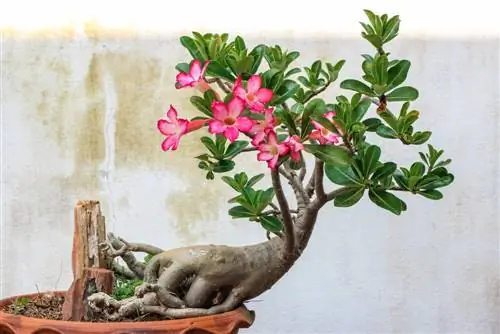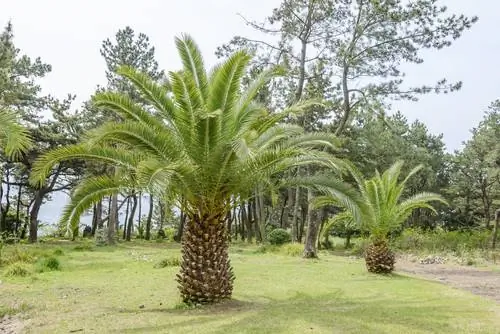- Author admin [email protected].
- Public 2023-12-25 17:45.
- Last modified 2025-01-23 11:22.
Where distinctive cupped flowers float above lush green rosettes of leaves in spring, the carnation root performs its floral magic. Geum bloom tirelessly in the natural garden, herbaceous bed and rock garden until autumn. Do you still have questions about cultivation on your mind? Then discover the answer here directly from gardening practice.
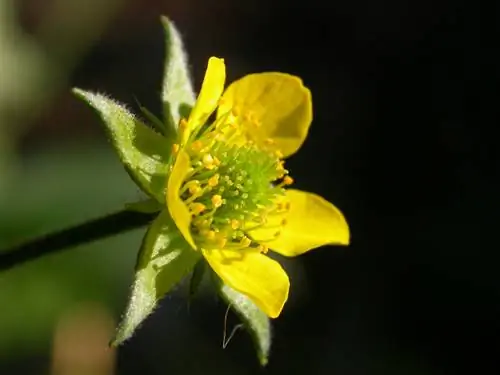
How do you care for a clove root?
The carnation root is an easy-care perennial with distinctive cup flowers that bloom from April to August. It thrives well in sunny to partially shaded locations and prefers well-drained, nutrient-rich soil. Care includes regular watering, pruning for subsequent flowering and occasional fertilizing with compost and horn shavings.
Planting clove root correctly
Geum grown in containers can be planted in the bed between April and August, as long as there is no sweltering heat or desert-like drought. After the soil has been thoroughly weeded and raked in a sunny to partially shaded location, create small planting pits at a distance of 20 to 40 cm. Mix a third of ripe compost and horn shavings into the excavation before planting the potted clove root in it. Water abundantly and regularly on the day of planting and thereafter so that the perennial roots root well. Waterlogging must be avoided at all costs. A mulch layer of leaves, grass clippings or bark mulch keeps the soil moist and warm for longer.
Care tips
Cloveroot is the ideal anti-stress perennial for the hobby gardener with limited time available. A Geum is happy to accept the following care program, but will not hold it against you if one or the other measure fails:
- Water Geum regularly if there is not enough rain
- Summer pruning down to the rosette of leaves if rebloom is desired
- Fertilize organically before the flowering period begins and after pruning
- Light winter protection makes sense in the first two years and in the pot
The wintergreen or evergreen foliage decorates the garden during the cold season and serves as a retreat for insects. Pruning close to the ground therefore only takes place shortly before the new shoots appear, but not without first checking the perennial for animal winter guests.read more
Which location is suitable?
The multifaceted Geum genus offers pleasing flexibility in terms of location choice. For example, the undemanding mountain clovewort (Geum montanum) or the Chilean clovewort (Geum chiloense) are ideal for full sun to sunny locations. If you need to green a semi-shady location with Geum, the red carnation root (Geum coccineum) or one of the countless hybrids is available. The spring perennial only becomes limp in shady locations.
What soil does the plant need?
The broad Geum genus contains suitable species and varieties for almost every soil condition. We have put together a small selection for you from more than 50 species and several hundred varieties:
- Bach avocado (Geum rivale): For moist pond edges without waterlogging
- Mountain clove root (Geum montanum): For sunny locations with sandy, dry, well-drained soil
- Creeping clove root (Geum reptans): The ideal ground cover for fresh, moist, nutrient-rich, low-lime soil
- Red carnation root (Geum coccineum): Thrives in any good garden soil and tolerates short-term drought
When is flowering time?
The carnation root opens its long-lasting flowering period from April with its distinctive bell-shaped flowers. As the spring sun strokes the flowers, the bells unfold into magnificent bowls in rich yellow and orange tones to bright red and white. Since the majority of Geum species and varieties are able to replant, the flowering period extends into August after pruning.
Cut clove root correctly
After the first round of flowers, cut the carnation root down to the upper stem leaves. With a little luck, a portion of compost and nice summer weather, the perennial will bloom again. Use the most beautiful flower stems to create magnificent bouquets. Cut off the shoots that have just bloomed for a long shelf life. The perennial continues its decorative work with its wintergreen foliage throughout the cold season, only to be cut off close to the ground in January/February.
Watering clove root
The water balance is adapted to the cultivated clove root species or variety. The brook carnation root requires frequent watering, while the Chilean carnation root knows how to cope with short-term drought. The rule of thumb for all geum is that the root ball should not dry out at any time because the perennial has difficulty recovering from this stress.
Fertilize clove root properly
In the wild, carnation root is a pioneer plant, which suggests that it has a low nutrient requirement. Nevertheless, a portion of ripe compost soil with horn shavings shortly before the flowering period begins promotes vitality and abundance of flowers in equal measure. Ideally, you should repeat this care after the summer pruning for abundant re-blooming.
Wintering
Botanists assign carnation root to winter hardiness zones Z 5 and Z 6, so the perennial is considered completely winter-hardy. However, we recommend a mulch layer of leaves and brushwood for the first two years, as the frost hardiness only builds up gradually. Cultivated in pots and balcony boxes, precautions against freezing frost are essential so that the root ball does not freeze. To do this, place the container on cold-insulating material and cover it with foil, jute or garden fleece.
Propagate clove root
Carnation root offers hobby gardeners two uncomplicated methods of propagation. Dividing the root ball in early spring also serves to rejuvenate the perennial, as it becomes bare from the middle after 3-5 years. There is also the option of sowing, which with a little luck will give you a blooming Geum in the first year. The most important work steps at a glance:
- Direct sowing between April and August
- Prepare the soil with fine crumbs to sow the seeds
- Sift thinly with sand or vermiculite and moisten with a fine shower gel
- At 18 to 20 degrees Celsius and regular watering, germination takes 20 to 30 days
- Prick out after 4 to 6 weeks at a distance of 30 x 30 cm
If the seedlings are trimmed once about 4 weeks after pricking out, this measure contributes to bushy, lushly branched growth.
How do I transplant correctly?
After 3 to 5 years, the carnation root tends to go bald from the inside. You can effectively prevent this shortcoming with targeted transplanting. This is how the plan works:
- Dig up the perennial in spring or autumn
- Shake off the old soil and place it on a stable surface
- Cut with a knife to cut out the aging root areas
Replant each segment that has at least 2 shoots in the new location. If you want the pretty flowers to continue to appear in their current location, enrich the soil with compost, horn shavings and a handful of sand.
Is clove root poisonous?
Instead of toxic ingredients, healing eugenol and other ingredients flow through the classic clove root. Even in ancient times, the rhizome of the wild species was used to give wine and beer more flavor. Hildegard von Bingen and the healer Pastor Künzel swore by the healing powers of carnation root. The plant has a reputation for heart-strengthening, antispasmodic, hemostatic and anti-inflammatory effects.
Beautiful varieties
- Prinses Juliana: Geum chiloense with a fantastic long-distance effect thanks to its splendid orange flowers; Growth height 20-60 cm
- Ruby: The variety impresses with rich red flowers that no observer can escape; Growth height 40-60 cm
- Diana: Little Geum, who draws enchanting garden pictures with bright yellow flowers; Growth height 20-30 cm
- Lionel Cox: Beautiful brook carnation root for the edge of the pond with cream-colored flowers; Growth height 20-30 cm
- Three-flowered carnation root: Magnificent counterpart to Bach-Geum with red bell-shaped flowers in the rock garden; Growth height 10-30 cm

